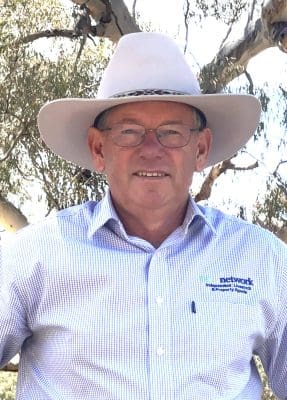Chris Howie
July and August historically have been times of price volatility in the South linked to low supply. For this article I thought it is the right time to leave market reporting out, take a breather and look at the season coming. Prices will look after themselves and the majority have nothing to sell in the South any way. For the North it is business as usual with numbers rocking along with good feed and well-conditioned stock appearing.
It is also a difficult time of the year to set up a trade with the pending Spring supply appearing. This year the current demand looking forward is providing opportunities to write forward contracts all the way till December which allows informed purchasing decisions to be made.
The various market reports at this time of the year often provide a distorted view of the health of the market and we should be wary of using them for our spring decision making. This week cows eased by 30-40 cents from a very high level topping at $4.50 liveweight. Even though the amount seems large it is under a 10 percent movement. My concern is lambs when numbers appear will fall back in price very quickly to what we previously considered good money. I don’t want to be the wet blanket, but my opinion is once numbers appear we could see a correction of $80-$100. This movement can leave some trades exposed if they have not locked a price in.
Supply and Demand – Price reaction not necessarily customer driven: As I mentioned a couple of months ago the current prices have been driven by a shortage of supply and an overcapacity of kill space. In turn processors needed to hunt supply to ensure staff, especially visa worker are retained within the requirements of the visa. With eight weeks of upward volatility, we are starting to see shift rationalisation across several sheep plants. Two locations have cut shifts completely and one has reduced days. I think it is important we understand this, as the price reaction is not necessarily customer driven. The Australian price comparative to other exporting nations is very well set for us to remain competitive for export. This position also creates a more robust long-term view for farm gate prices over the next 12 months. I’m not saying it will get dearer but I feel the core prices that drive processors, feedlots and live export will stay more stable. Feed availability, quality and weight still rule the result, but confidence is returning to the livestock scene which had been missing for too long without reason.
Perfect timing Price discovery has been an issue for a long time in Australia. The more supply the more transactional sales become. In turn this creates a difficulty in forecasting trade margins, finance and feeding requirements. AuctionPlus and Agora are developing lamb forward pricing models for agency and their clients. With the current market trends these may allow agents to create price discovery further forward and lock into supply arrangements. Especially in sheep, lambs and goats this will help level out volatility which benefits producer, agents, feedlots and processors.
I know from experience that a basis contract offered forward with a potential quality dial creates positivity within the trading environment. Margins can be calculated, specifications targeted and a focus on optimising weight gain with confidence versus fatten and hope for the best. A natural result of this is the benefit on demand and price that flows to the breeder.
Industry level events Over the past month I have attended two events that captured the need for all of us to work together with an aligned goal. On top of this we also ran the August Training workshop for Agency ands Supply Chain in Wodonga.
The RMA Network annual conference saw 180 Independent Real Estate and Stock Agents including service providers from all over Australia gather in Adelaide for 3 days. The opportunity to network and listen to world class speakers elevated the positivity within this group. The keynote speakers included Darren Thomas MD of Thomas Foods International who supplied an open book view of the livestock supply chain. Daryl Milton F/A 18 fighter pilot and Hypersonic missile development gave insight into decisions under pressure with some great war stories. Matt Dalgliesh EP3 gave all an insight to what the trends are for the livestock industry and how a multitude of factors outside of our control determine demand and price. Tim Gentle, Think Digital with insight into the huge changes within agriculture using innovation and AI driven solutions for complex tasks. Closing highlight was the Gala dinner featuring Australian Pop Quartet and their electric violins at the National Wine Centre and a charity auction for the RFDS conducted by Carley Einsiedel, Alex Scott and Staff, Sale and Trent Severino, TB White and Sons, Ballarat.
JBS suppliers Rob and Joan Liley received the Sustainability Award from Dr Stephen Wiedemann during this year’s JBS Great Southern supplier awards dinner
The JBS Supplier of the Year awards can only be described as a wow event. With a day of innovation and insight discussion providing a great platform for the evening event with 650 attendees. Producers, agents, service providers and the JBS management team all enjoyed an evening of great food and recognition of the livestock producers who really focus on the end article supplied using measurement, livestock production advise and genetics.
Cattle
The stud season is well underway and as discussed, the current prices being received should see an investment by commercial breeders targeting better quality bulls aligned to your target market. The other conversation appearing is the absolute benefit of some form of cross breeding program within your various operations. This is not about losing the blood line integrity of your female herd but creating more weight for age. It has been proven time and again that hybrid vigour increases weight for age. The cross breeding vigour conversation is not new but is now being incorporated into sustainability discussion and papers.
 Considerations are using a simple cross on your older cows. Angus over Hereford, Hereford over Angus, Santa over Angus, Charolais over Brahman, Euro over Black Baldy etc etc. High end, breed specific supply arrangements into feedlot and processors do reward the progressive producer. However, many producers just run cattle focused on calves on ground as part of a larger agricultural enterprise. The hybrid vigour mindset will allow more kilos to be produced – especially if you take the time to record calving dates and exit kilos, not just how many calves you marked to record the benefit to your bottom line. Note: EBV’s are aligned to each breed and cannot be compared between breeds as a simple number. Your target market will help you pick the right EBV set for your bull selection.
Considerations are using a simple cross on your older cows. Angus over Hereford, Hereford over Angus, Santa over Angus, Charolais over Brahman, Euro over Black Baldy etc etc. High end, breed specific supply arrangements into feedlot and processors do reward the progressive producer. However, many producers just run cattle focused on calves on ground as part of a larger agricultural enterprise. The hybrid vigour mindset will allow more kilos to be produced – especially if you take the time to record calving dates and exit kilos, not just how many calves you marked to record the benefit to your bottom line. Note: EBV’s are aligned to each breed and cannot be compared between breeds as a simple number. Your target market will help you pick the right EBV set for your bull selection.
Sheep
Sheep, wool, lambs and IMF. It seems to be an easy conversation to disregard the value of merinos by continually rehashing the shearing requirements. This week we saw merinos with a 50mm of wool receive a $22 skin price over the hooks. The productivity math for the merino really shines if you are prepared to put the time in. Targeting a 110% lambing with a merino or terminal sire plus wool and ewe trade in value the numbers remain extremely profitable.
Looking forward I think the key piece is the development of processor programs that will elevate lamb from a commodity “all the same” into selected premium markets. The recent Australian Merino Production Trial saw Intra Muscular fat (IMF) in the merino breed come out on top. Keep an eye out as the results will be released in the near future.
IMF is already being rewarded through Gundagai Meat Processors who have invested considerable resources in developing a product aligned to eating quality not just a commodity red meat item. Listening to Darren Thomas from TFI and looking at the MLA development programs my belief is technology will very soon allow chain speed assessment for lamb IMF and a similar grading to MSA in beef.
More importantly not all merinos are the same and the focus by studs on carcase confirmation and inclusion of IMF and eating quality as well as wool within their programs is next generation merino marketing. For the everyday merino producer, you need to get your head in the game about how you can improve this component within your flock. Profitable sheep operations keep up with trends and are now looking to elevate premium capture through innovation like IMF instead of accepting the average. If we can advance to this level of measurement the lamb feed lot industry will then start to receive reward for quality that aligns to the cost of feeding not just supply when grass fed is short. The upside for the modest merino is enormous but we need to be thinking about the future now not 2 years after it arrived. The positivity about the future of the merino is far greater than just a price discussion or the wool clip.
Decision by Chris I have had the privilege of being the CEO for the RMA Network for the past 2.5 years however time doesn’t stop for anyone and next July I have let the RMA Network Board and membership know I will retire. Much the same as the decision to stop playing football, it is a simple line in the sand that has been my decision point.
As a young man who only did year 12 at school, I never thought I would have had such a tremendous opportunity provided by our industry. As my wife Kate and many others have commented, “You can’t just stop”. I don’t intend to become a hermit and I will still be part of industry in some form if allowed. Training young people has been my hobby and the opportunity and support from Jon Condon, James Nason and their team to write this article each month since 2019 has been fantastic. I will continue writing and training as long as I remain relevant but it’s time to stop jumping out of bed to a day job. The RMA Network will start a process to identify my replacement focused on continuing to build on the progress and opportunities developed for the Independent Agency community who are so important for the entire supply chain. Drop me a line if you are interested.
Opportunities.
Don’t just talk about prices – try and grab some of it.
Grab your replacement ewes as soon as possible.
PTIC Spring calvers
Trade out old ewes and cows
Keep selling the top of the drop as soon as ready – especially sucker lambs
RMA Network CEO role.
Chris Howie is a regular Beef Central and Sheep Central market columnist and the CEO of RMA.



